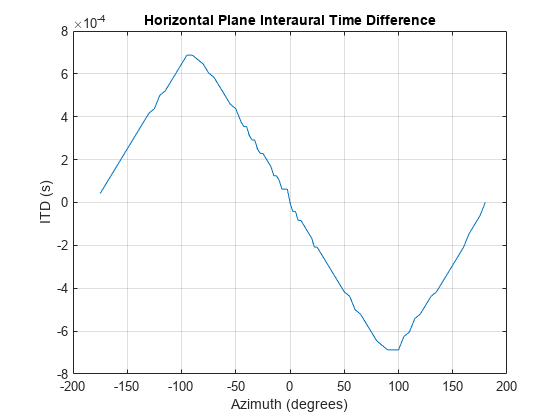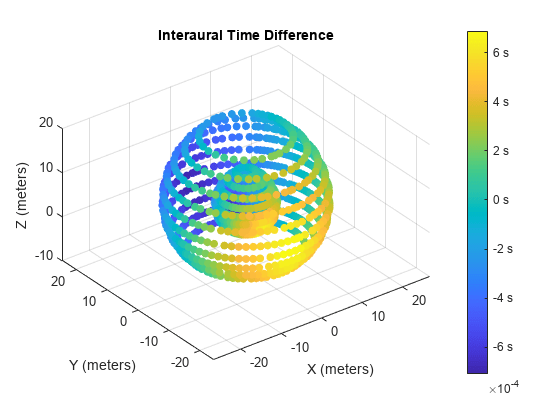interauralTimeDifference
Syntax
Description
itd = interauralTimeDifference(s,Name=Value)
interauralTimeDifference(___) with no output arguments
plots the interaural time difference.
Examples
Input Arguments
Name-Value Arguments
Output Arguments
More About
Algorithms
The interauralTimeDifference function calculates the interaural time difference
according the onset threshold method described in [1].
References
[1] Andreopoulou, Areti, and Brian F. G. Katz. “Identification of Perceptually Relevant Methods of Inter-Aural Time Difference Estimation.” The Journal of the Acoustical Society of America 142, no. 2 (August 1, 2017): 588–98. https://doi.org/10.1121/1.4996457.
Version History
Introduced in R2024a
See Also
sofaread | findMeasurements | plotGeometry | freqz | impz | spectrum | interauralLevelDifference | directivity | energyTimeCurve

